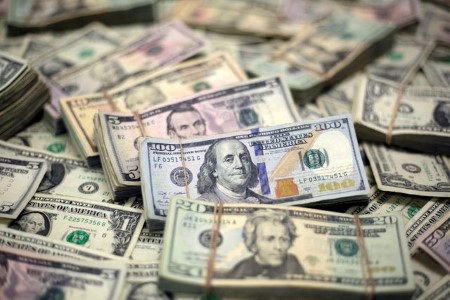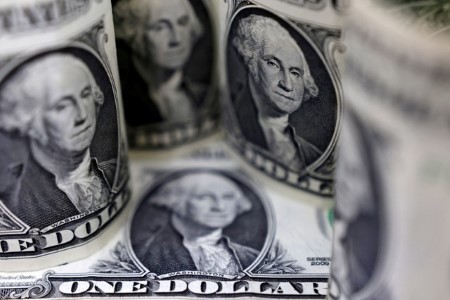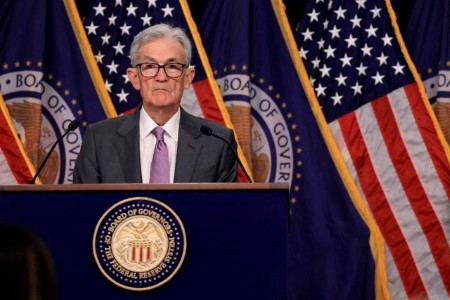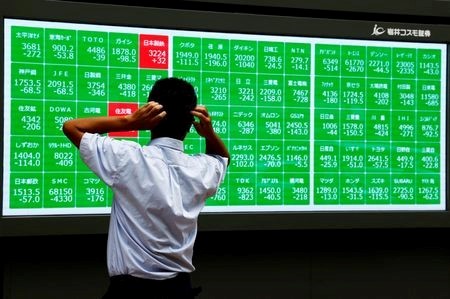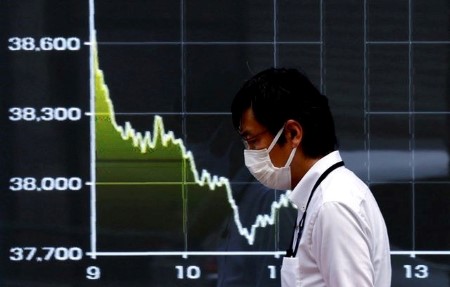NEW YORK – A surge in the yen to a seven-month high led a broad dollar fall, as a slew of economic data last week raised the prospect of a US economic downturn and bigger interest rate cuts from the Federal Reserve.
The dollar index, which tracks the US currency against a basket of six others, was down 0.46% to 102.68, after sinking as low as 102.15, its weakest since January 12.
Against the yen, the dollar fell 2.04% to 143.5, close to the weakest level for the year. The euro was up 0.37% to USD 1.095, after rising as high as USD 1.1009, its strongest since Jan. 2.
Weaker-than-expected US jobs data, along with disappointing earnings reports from large technology firms and heightened concerns over the Chinese economy, have sparked a global sell-off in stocks, oil and high-yielding currencies in the past week as investors sought the safety of cash.
The selling continued on Monday, with US Treasury yields falling further, stock indexes in the red, bitcoin dumped and the dollar losing ground.
“When you zoom out and look at the big picture, whenever there’s a crisis in markets, it’s clear that there’s far too much leverage and everyone is crowded into the same trades,” said Adam Button, chief currency analyst at ForexLive.
Treasury yields have been falling sharply since last week, when the Fed kept the policy rate in its current 5.25% to 5.50% range while Fed Chair Jerome Powell opened the possibility of a rate cut in September.
But by Friday, after data showed the unemployment rate had jumped, expectations for rate cuts rose.
“Friday’s (non-farm payrolls) report was a bit of a shock to the global system, and markets are very worried that the US may no longer be a viable driver of global growth,” said Helen Given, FX trader at Monex USA in Washington.
The Japanese yen’s surge comes as traders aggressively unwound carry trades. So-called carry trades, where investors borrow in money from economies with low interest rates such as Japan or Switzerland to fund investments in higher-yielding assets elsewhere, have been popular in recent years.
“Whenever there’s trouble, the rush to the exit is so dramatic that it creates these incredible waves in markets that swamp related markets,” said Button. “You never know how much money is piled into the carry trade until it unwinds.”
On Monday, Fed fund futures reflected traders pricing a near 100% chance of a 50 basis point cut at the central bank’s September meeting, according to CME FedWatch.
“The Japanese equity sell-off during Asian trading spooked markets in a big way, coupled with the yen’s resurgence, and we may be seeing the so-called ‘panic spiral’ that many have been concerned about,” Monex’s Given said.
Meanwhile, the Swiss franc, another popular carry trade funding currency, was 0.83% higher at 0.85 to the dollar. The franc, a traditional safe haven, was also trading near a seven-month high.
The dollar found some relief against the British pound as the marked deterioration in global investor risk sentiment sapped demand for riskier currencies.
The depreciation of Mexico’s peso extended into its third day on Monday, and the US dollar rose 1.64% to 19.48 pesos, on investor risk aversion.
In cryptocurrencies, bitcoin and ether plunged on Monday to multi-month lows as investors a rushed out of risky assets. Bitcoin was down 15.11% to USD 53,094, heading for its largest one-day fall since November 2022. Ether was last down 21.25% at USD 2,374.70.
(Reporting by Hannah Lang and Saqib Iqbal Ahmed in New york; Additional reporting by Vidya Ranganathan in Singapore, Sruthi Shankar, and Sarupya Ganguly in Bengaluru; Editing by Christopher Cushing, Ros Russell, Christina Fincher, Nick Zieminski, and Jonathan Oatis)







 DOWNLOAD
DOWNLOAD




